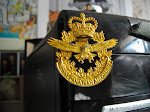Arrow Remover (1500s)
Not much is known about this tool, but it is hypothesized that it was inserted into the wound in a contracted position, with the central shaft used to grasp the arrow. The blades, which appear to have their sharp edges facing outward, were then expanded using the scissor-like handles, thus expanding the flesh around the arrow to prevent the arrowhead from ripping through the meat as it was pulled out.

Artificial Leech (1800s)
Bloodletting with leeches was such a popular treatment for a range of medical conditions that an artificial leech was invented in 1840 and was used frequently in eye and ear surgery. The rotating blades would cut a wound in the patient's skin, while the cylinder would be used to produce a vacuum that sucked up the blood.

http://www.surgicaltechnologists.net/blog/20-scary-old-school-surgical-tools


































































































%20SDTB.jpg)










No comments:
Post a Comment